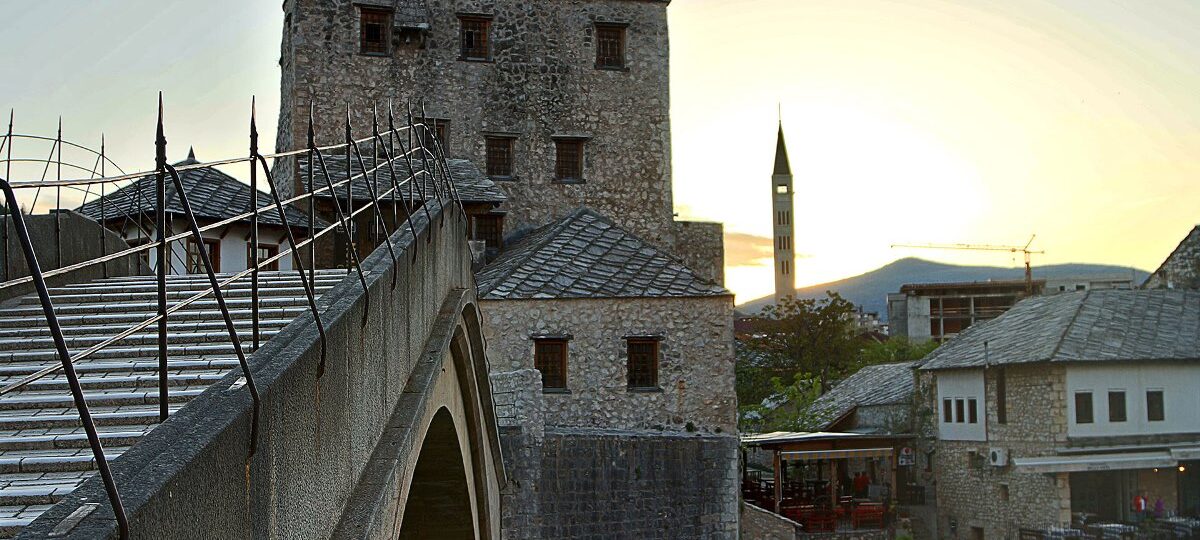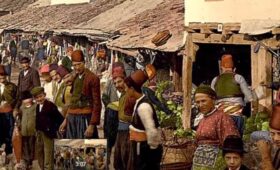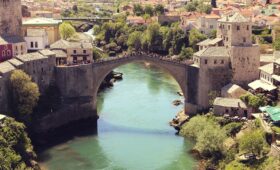The city of Mostar is worldwide known for the many bridges and its name derives from the bridge keepers (mostari) who in the medieval times guarded the Stari Most (Old Bridge) over the Neretva.
The Old Bridge was built in 1566. and since then this town became an important strategic place and the base for Ottomans to conquer the rest of Balkan area. The bridge had to be established with the bridge towers while the pathways was made of cobblestones. In case you have missed it, see our post Kaldrma, the cobblestone pathways spreading through Mostar.
On the east bank raises Tara Tower which was used as a deposit for ammunition in the Ottoman era. The Halebija Tower is on the west side. It was once the prison on its lower floors, and small barracks on its upper floors, also used as a look-out post.
The local people also called this tower with the name which is a synonym for jail.The base of both towers is a semi-circle.
Behind the Tara Tower, on the left bank of the Neretva River, stands a historic structure built in the first half of the 15th century during the reign of Herceg Stjepan Vukčić Kosača. Architectural studies suggest that the towers were originally smaller in scale but underwent multiple reconstructions over time. With each modification, additional walls were built, gradually expanding and strengthening the structure to enhance its defensive capabilities.
Today inside the Tara Tower is the museum of the Old Bridge.
It was inaugurated in 2006 to commemorate the second anniversary of the reconstruction of the Old Bridge. The museum consists of three distinct sections, each offering a unique perspective on the bridge’s rich history. The first section is housed within the tower itself and features an exhibition of archaeological artifacts uncovered during the bridge’s reconstruction in 2002. These artifacts are complemented by a series of informative charts that provide detailed insights into the key historical events associated with the bridge, allowing visitors to gain a deeper understanding of its cultural and historical significance.
Visitors can explore five floors of this section, each offering a unique perspective on the historical site. At the highest point of the building, a charming gazebo awaits, providing a breathtaking 360° panoramic view of the entire city. This vantage point allows guests to take in the stunning landscape, offering a memorable experience of the surrounding architecture and natural beauty.
The second section exhibits pre-existing remains of archaeological importance from underneath the tower, the remains of two wooden bridges belonging to the period before that of the stone bridge and the base of the Old Bridge.
he third section, known as the “Labyrinth,” features a captivating photographic gallery dedicated to the Old Bridge, showcasing images of the damaged towers and the various stages of their reconstruction. In addition to the visual displays, visitors can engage with audio-visual multimedia charts that narrate the detailed history of the bridge’s restoration, providing an immersive and educational experience.
Tourists can visit the museum every day from 08:00 do 16:00.



